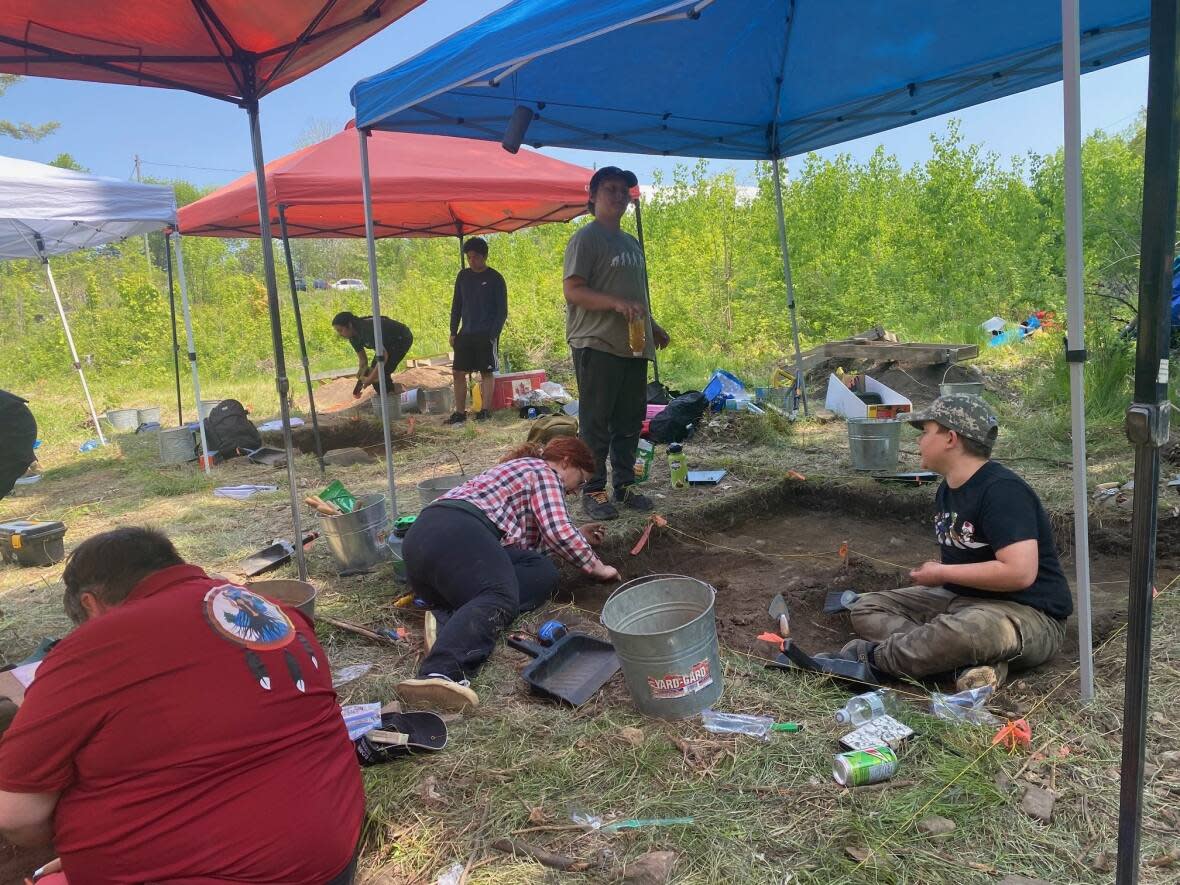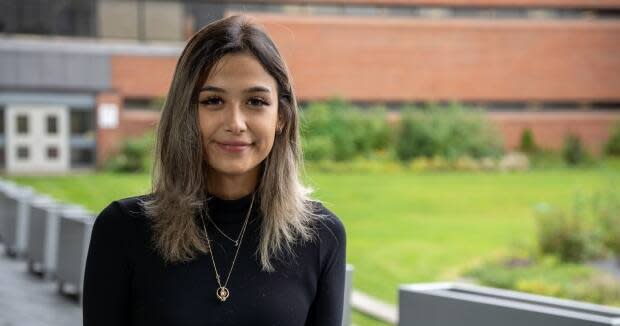Archaeological digs in Pikwàkanagàn uncovering history on site of future water treatment plant

An Indigenous archaeological field school is conducting community digs at the site of a future water treatment plant in Pikwàkanagàn.
Construction of the treatment facility is expected to soon start in the First Nation, located around 140 kilometres west of Ottawa, where many people have not been able to drink their tap water for decades.
But before that can start, archaeological field school Anishinàbe Odjìbikan is holding several community digs on the site, inviting people to help uncover traces of the past.
Archaeological assessments of the site in 2021 found evidence of two Anishinaabe Algonquin cabins from between the 1830s and 1970s, said Jenna Lanigan, a member of the Algonquins of Pikwakanagan First Nation and a supervisor with Anishinàbe Odjìbikan.
The assessment also found several pre-contact artifacts, including "lots of quartz," providing an insight into when these were used, and by whom.
"It was telling us that the site's probably between 8,000 to 10,000 years old," Lanigan said.
"Over time they used easier materials to work with. So when we find quartz it's really indicative of a very certain period."

A chance to learn about history, culture
Lanigan said it's important for the community to take part in these digs to learn more about their history and their ancestors.
"We're trying to regain the knowledge, the information and the confidence because we were a smart people and a lot of the things we find really prove that," she said.
Seeing the amount of detail, care and talent it took to create the tools and artifacts found on the site shows that, she added.
"It's just really motivating. And I think it's important for especially the youth to see, so they grow up with some of that confidence and pride in the culture."
So far at the dig, Derrick Amikons from Pikwàkanagàn has found a speahead and several pieces of quartz artifacts.
Amikons said he's always loved archaeology.
"[It] feels good to touch the past, be in touch with my elders, in a way. And yeah, it gives you a sense of purpose."

Eight-year-old Kael Leroux, from nearby Golden Lake, also came to take part in the dig, where he found a few different items.
"We have, like, I'm pretty sure an old teacup in here. We have a few pieces of animal bones, porcelain, lots of porcelain," he said.
Leroux said his family has a well and are lucky to have clean water. "But many people don't. So this is kind of helpful for the people that don't," he said of the future treatment plant on the dig site.
Emma Logan, an indigenous liaison with Anishinàbe Odjìbikan, grew up in Pikwàkanagàn and says her family still doesn't have clean drinking water.
She said she's excited for the treatment plant, which has been needed for so many years.
"I'm really happy we got the chance to dig before it was built," Logan said. "Because if we didn't then they would have built over, maybe, possible artifacts that could tell histories we don't even know yet."


